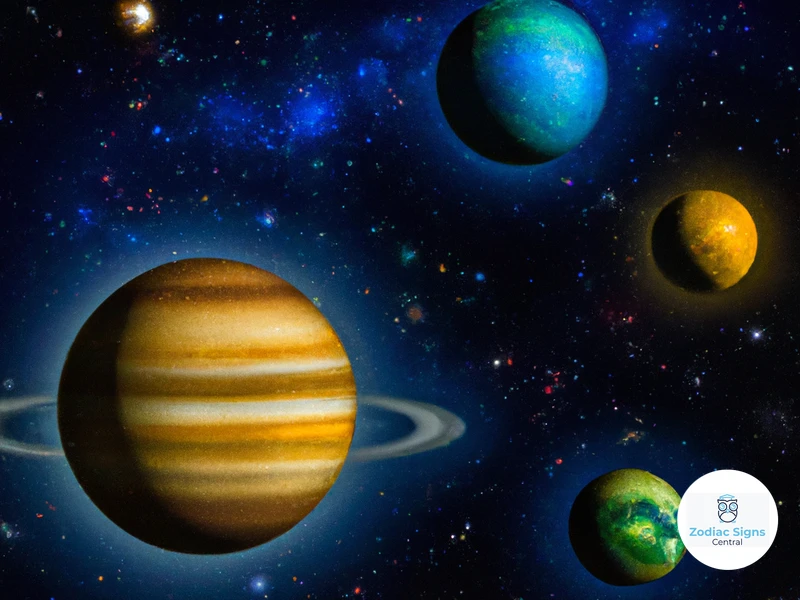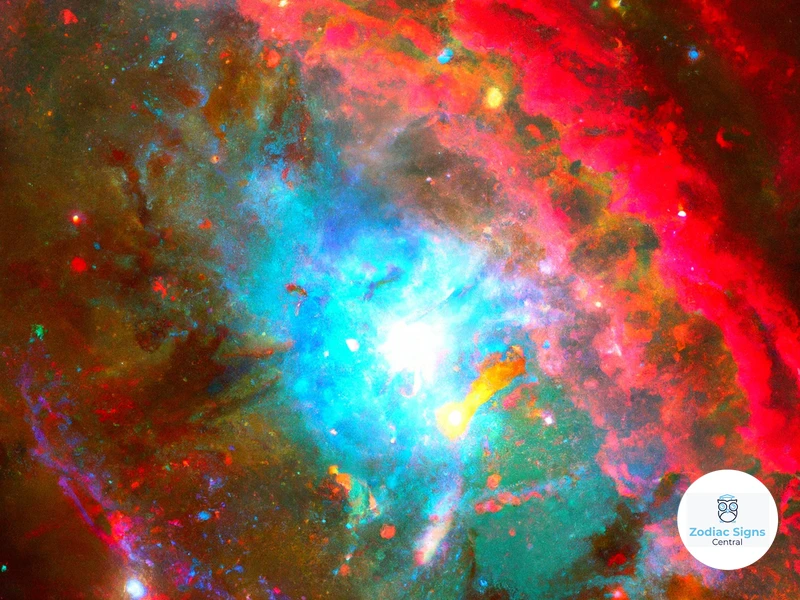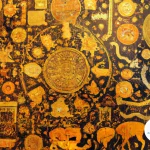Unraveling the Mysteries of Outer Planetary Aspects – Have you ever looked up at the night sky and wondered about the cosmic forces and energies that shape our lives? Outer planetary aspects hold the key to understanding the intricate dance of the planets and their influence on our individual and collective destinies. In this article, we will delve deep into the realm of outer planetary aspects, deciphering their significance, interpreting their meanings, and unlocking the secrets they hold. Join us on this celestial journey as we navigate the complexities of the outer planets and explore their profound impact on astrology. Prepare to be captivated and enlightened by the celestial wonders that unfold before us.
Understanding Outer Planetary Aspects

The Role of Outer Planets
Outer planets, including Uranus, Neptune, and Pluto, play a crucial role in astrology as they represent the higher realms of consciousness and cosmic forces that shape our lives. These planets reveal the deeper layers of our existence, bringing transformative energies and awakening our hidden potentials. While the inner planets (Mercury, Venus, Mars, Jupiter, and Saturn) are more personal and affect our day-to-day experiences, the outer planets influence broader themes and long-term trends in our lives. They guide us towards growth, evolution, and connection with the larger universe.
Defining Planetary Aspects
Planetary aspects refer to the geometric relationships between different planets in the birth chart or during specific celestial events. These aspects create a dynamic interplay of energies, influencing our personality traits, behaviors, and life experiences. In the context of outer planetary aspects, it involves the interactions between the outer planets and other celestial bodies or points in the chart. Aspects can be categorized as harmonious or challenging, indicating the flow or tension of energy between the planets involved. Harmonious aspects, such as trines and sextiles, signify ease, abundance, and opportunities, while challenging aspects, like squares and oppositions, bring about tension, conflicts, and transformative experiences.
For example, during a monthly lunar phases, the outer planets influence the Moon, intensifying the emotional undertones of each phase. The Moon, representing our emotions and instincts, harmoniously aspects Neptune, enhancing our intuition and spiritual connection. This alignment invites us to dive deep into our subconscious and explore the depths of our emotions. The Scorpio Sun, known for its intensity and depth, also forms a transformative aspect with Pluto, amplifying our desire for personal growth and empowering us to embrace our inner power. These planetary aspects weave together a complex tapestry of energies, guiding us towards self-discovery and spiritual awakening.
Understanding the role and definition of outer planetary aspects is essential as it forms the foundation for interpreting their significance and unveiling their secrets. So let us dive deeper into the realm of outer planetary aspects and explore their profound impact on astrology.
1. The Role of Outer Planets
Outer planets, such as Uranus, Neptune, and Pluto, hold great significance in astrology due to their unique roles and influences. Each of these outer planets offers distinct energies and characteristics that shape our individual and collective experiences.
Starting with Uranus, this planet represents innovation, rebellion, and individuality. It encourages us to break free from societal norms and embrace our authentic selves. Uranus brings about unexpected changes, revolutions, and a sense of awakening. Its influence is often associated with technological advancements, scientific discoveries, and societal shifts. Understanding the impact of Uranus in our birth charts can help us uncover our unique talents and propel us towards personal growth and liberation.
Moving on to Neptune, this planet holds sway over our dreams, imagination, and spirituality. It guides us into the realms of intuition, compassion, and transcendence. Neptune’s energy is ethereal and elusive, blurring the boundaries between reality and fantasy. It invites us to tap into our subconscious, explore our deepest emotions, and connect with higher dimensions. With Neptune’s influence, we may experience heightened sensitivity, artistic inspiration, and a profound sense of empathy. Exploring the connection between Neptune and water signs can provide additional insights into the emotional depths and intuitive nature of these signs.
Lastly, Pluto brings transformation, power, and regeneration into our lives. Often associated with beginnings and endings, Pluto’s energy is intense, profound, and alchemical. This planet governs the process of death and rebirth, symbolizing personal and collective soul evolution. Pluto challenges us to confront our deepest fears, embrace our shadows, and release what no longer serves us. It holds the key to our inner power and the potential for profound personal transformation. Understanding the influence of Pluto in our birth charts can shed light on our ability to navigate life’s obstacles, tap into our resilience, and experience powerful metamorphoses.
These outer planets play a vital role in shaping our personalities, experiences, and the broader societal landscape. By understanding their unique energies and influences, we can gain a deeper appreciation for the mysteries of the cosmos and the power of astrology. So, let us delve further into the realms of these outer planets and explore the ways their energies shape our lives.
2. Defining Planetary Aspects
In astrology, planetary aspects are geometric relationships between celestial bodies that provide valuable insights into our personality traits, behaviors, and life experiences. These aspects can be classified into several types, each carrying its own unique energy dynamics:
1. Conjunction (0 degrees): A conjunction occurs when two planets are in close proximity, appearing to merge their energies. This aspect intensifies the combined energy of the planets involved, creating a potent force that can manifest in different ways. A conjunction can signify unity, synergy, and focus, but it can also bring challenges if the energies clash.
2. Opposition (180 degrees): The opposition aspect occurs when two planets are directly across from each other in the birth chart, creating a tension that reflects opposing forces in our lives. This aspect invites us to find balance and integration between the energies represented by these planets. The opposition can bring about conflicts, but it also offers opportunities for growth and understanding.
3. Trine (120 degrees): A trine aspect forms when two planets are approximately 120 degrees apart, creating a harmonious flow of energy. This aspect enhances compatibility and ease between the planets, fostering natural talents, positive opportunities, and a sense of fluidity. Trines signify favorable circumstances and favorable connections that support growth and expansion.
4. Square (90 degrees): The square aspect represents a dynamic tension between two planets that are approximately 90 degrees apart. This aspect brings challenges and obstacles, pushing us to confront and overcome limitations. Squares are catalysts for change, highlighting areas where we need to take action and make adjustments for personal growth.
5. Sextile (60 degrees): A sextile occurs when two planets are approximately 60 degrees apart, creating a harmonious and supportive energy flow. This aspect provides opportunities for growth, collaboration, and positive developments. Sextiles signify compatibility, favorable circumstances, and the potential for successful outcomes when we take action.
These are just a few examples of the various planetary aspects in astrology. Each aspect carries a unique flavor of energy and influences our lives in distinct ways. Understanding these aspects helps astrologers to interpret the complex interplay of energies and gain deeper insights into our individual and collective journeys. For a deeper understanding, you can explore how Neptune interacts with water signs and the emotional connection it brings. By delving into these interplanetary relationships, we can unlock the hidden wisdom within our birth charts and navigate life’s challenges with greater clarity and self-awareness.
The Significance of Outer Planetary Aspects
The Influence of Uranus
Uranus, the planet of innovation and revolution, holds great significance in outer planetary aspects. Its energy is electrifying and disruptive, bringing sudden changes and breakthroughs in our lives. When Uranus forms aspects with other planets, it sparks a sense of uniqueness, individuality, and unconventional thinking. These aspects can signify moments of enlightenment, liberation, and a need for freedom from societal constraints. Uranus encourages us to embrace our true selves, think outside the box, and embrace change as an opportunity for growth and transformation.
The Power of Neptune
Neptune, the planet associated with dreams, spirituality, and illusions, carries a profound influence in outer planetary aspects. Its energy is mysterious and transcendent, blurring the boundaries between reality and fantasy. When Neptune forms aspects with other planets, it brings a heightened sense of intuition, creativity, and sensitivity. These aspects evoke a desire for spiritual connection, compassion, and artistic expression. Neptune’s energy can also be challenging, as it can lead to delusions, escapism, and confusion. Understanding the significance of Neptune in outer planetary aspects allows us to channel its power in a balanced and transformative way.
The Transformational Energy of Pluto
Pluto, the planet of transformation and rebirth, holds immense significance in outer planetary aspects. Its energy is intense, penetrating, and transformative. When Pluto forms aspects with other planets, it brings about profound changes, inner growth, and the shedding of old patterns and beliefs. These aspects can be challenging, as they plunge us into the depths of our psyche, unearthing hidden truths and facilitating cathartic experiences. Pluto’s energy demands self-reflection, evolution, and embracing the process of letting go. Understanding the significance of Pluto in outer planetary aspects allows us to harness its transformational energy and navigate the cycles of life with resilience and empowerment.
Understanding the significance of outer planetary aspects, including the influences of Uranus, Neptune, and Pluto, gives us profound insights into the cosmic forces at play in our lives. These aspects shape our individual and collective journeys, inviting us to embrace change, spiritual connection, and personal growth. Let us now delve deeper into interpreting outer planetary aspects and unlock the meaningful messages they hold.
1. The Influence of Uranus
The Influence of Uranus
Uranus, the planet of innovation, revolution, and individuality, exerts a significant influence in astrology through its outer planetary aspects. When Uranus forms aspects with other planets in the birth chart or during celestial events, it brings a wave of unpredictability, sudden change, and a desire for freedom. The energy of Uranus is electric and dynamic, urging us to break free from limitations and embrace our authentic selves.
Uranus in harmonious aspects, such as trines or sextiles, generates excitement, originality, and bursts of inspiration. These aspects can spark new ideas, inventions, and unconventional perspectives. They encourage us to embrace new technologies, explore alternative ways of thinking, and create a progressive vision for the future. Individuals with prominent Uranus aspects often possess a rebellious streak, seeking freedom from societal norms and embracing their unique individuality.
On the other hand, challenging aspects involving Uranus, such as squares or oppositions, can manifest as sudden upheavals, disruptions, and a need for liberation. These aspects may bring unexpected changes, upheavals, and a sense of restlessness. They can shake the foundations of our lives, pushing us to question traditional structures and seek personal freedom. While these experiences may be chaotic or disruptive initially, they ultimately serve as catalysts for growth and personal transformation.
For example, an individual with Uranus conjunct their Sun may possess an eccentric and non-conformist personality, challenging societal norms and expectations. Their energy is electric, and they often have innovative ideas that can revolutionize their field of interest. Conversely, someone with Uranus square their Moon may experience unpredictable emotional fluctuations, feeling the need for emotional freedom and independence from traditional family or societal structures. This individual may seek unconventional ways of nurturing their emotions and forming connections.
Understanding the influence of Uranus in outer planetary aspects is key to unlocking its impact on astrology. Whether through harmonious or challenging aspects, Uranus brings the energy of innovation, revolution, and individuality, urging us to break free from limitations and embrace our true selves.
2. The Power of Neptune
Neptune, the mystical planet associated with dreams, illusions, and spirituality, holds immense power and influence in astrology. Its energy is ethereal and transcendent, often blurring the boundaries between reality and fantasy. This planet represents our connection to the divine, highlighting our intuitive abilities and inspiring us to tap into the higher realms of consciousness. Neptune’s influence can be both enchanting and challenging, as it encourages us to explore our spiritual depths while also presenting the potential for escapism and deception.
As Neptune travels through the zodiac, it spends about 14 years in each sign, bringing its unique qualities and themes to the forefront. When Neptune’s energy aligns with a personal planet or a sensitive point in the chart, it can have a profound impact on an individual’s life. For instance, individuals with strong Neptune influences may possess heightened psychic abilities, a deep empathy for others, and a natural inclination towards creative expression.
Neptune’s energy is particularly potent when it interacts with water signs (Cancer, Scorpio, Pisces), as these signs naturally resonate with the ethereal and emotional qualities represented by Neptune. The sensitive and intuitive nature of water signs amplifies Neptune’s power, leading to enhanced spiritual connections and emotional depth. If you want to learn more about the significance of Neptune and its influence on water signs, you can explore our article on Neptune and Emotional Connection in Water Signs.
Understanding the power of Neptune in astrology allows us to navigate its energies with mindfulness and awareness. By embracing Neptune’s transformative and spiritual energy, we can unlock our intuitive potential, embrace our connection to the divine, and find inspiration in the realm of dreams and imagination. Whether Neptune brings illusions or enlightenment, its influence calls us to awaken our inner magic and explore the depths of our consciousness.
3. The Transformational Energy of Pluto
Pluto, the farthest and smallest planet in our solar system, holds immense power and represents the forces of transformation. It governs deep-seated psychological processes and acts as a catalyst for profound change and rebirth. Pluto’s energy is intense, relentless, and sometimes even ruthless, as it urges us to face our fears, embrace our shadow self, and undergo personal and spiritual metamorphosis.
Pluto’s influence in astrology is often associated with themes of death, regeneration, power, and control. It brings about transformative experiences that can be both challenging and liberating. When Pluto forms significant aspects in a birth chart, such as conjunctions, squares, or oppositions, its energy becomes even more potent and impactful.
Pluto Conjunct Sun: This aspect signifies a powerful drive for personal growth and transformation. Individuals with this aspect often undergo significant life-altering experiences that completely reshape their identity and purpose. They have a deep understanding of the shadow self and the need to confront their deepest fears in order to rise from the ashes and embrace their personal power.
Pluto Square Moon: This aspect brings intense emotional experiences and the need to delve deep into the realms of the subconscious. It can bring about emotional upheaval and upheaval in personal relationships, forcing individuals to confront their deepest emotional wounds and heal them. While challenging, this aspect offers the opportunity for emotional growth and resilience.
Pluto Opposition Mercury: This aspect challenges the way individuals communicate and process information. It can bring about power struggles in intellectual pursuits and push individuals to confront their deeply ingrained beliefs and thought patterns. It ultimately encourages deep introspection and a shift in perspective, leading to intellectual growth and transformation.
Pluto’s transformational energy extends beyond the individual level and has profound effects on the world stage as well. Throughout history, significant world events have occurred during prominent Pluto aspects, such as revolutions, societal transformations, and upheavals. Understanding and interpreting the transformative energy of Pluto is essential in gaining insights into personal growth, collective evolution, and the profound mysteries of the universe itself.
Interpreting Outer Planetary Aspects

Major Outer Planetary Aspects
Interpreting outer planetary aspects requires a deep understanding of the energies and dynamics involved. Major outer planetary aspects are those that involve the outer planets (Uranus, Neptune, and Pluto) interacting with each other or with the inner planets. These aspects have a profound and long-lasting impact on our lives. For example, the Uranus-Neptune conjunction signifies a generational influence, bringing about significant social and cultural transformations. This aspect sparks innovation, liberation, and collective progress. On an individual level, it can foster visionary thinking and a desire for personal freedom.
The Uranus-Pluto square, another major outer planetary aspect, is known for its transformative and revolutionary energy. This aspect, experienced globally during certain time periods, has historically coincided with societal upheavals and transformative events. It challenges established structures, igniting rebellion and prompting radical change. On a personal level, this aspect can bring intense inner drive and the need for personal empowerment and transformation.
Minor Outer Planetary Aspects
In addition to the major aspects, there are also minor outer planetary aspects that contribute to the intricate tapestry of astrological influences. These aspects involve the outer planets interacting with other celestial bodies or points in the birth chart. While they may not have the same level of intensity or long-lasting effects as the major aspects, they still offer valuable insights into our unique qualities and experiences.
For instance, the Uranus-Mars trine can bring about bursts of inspiration, innovative ideas, and a drive for independence. This aspect encourages us to embrace change, take risks, and assert our individuality. Similarly, the Neptune-Moon sextile enhances our emotional sensitivity and intuition, allowing us to tap into the deeper realms of our emotions and connect with others on a profound level.
Interpreting these minor outer planetary aspects requires attention to detail and an understanding of how they interact with the overall energy dynamics in the birth chart. They add depth and nuance to our astrological interpretations, revealing the unique facets of our personalities and life experiences.
As astrologers, it is crucial to study and analyze both major and minor outer planetary aspects to provide accurate and insightful readings. These aspects unlock the hidden messages of the cosmos, guiding us towards self-awareness, growth, and alignment with the greater cosmic plan.
1. Major Outer Planetary Aspects
Major outer planetary aspects are powerful and long-lasting alignments that have a profound impact on our lives and the world at large. Let’s explore some of the key major aspects involving the outer planets:
– Conjunction: A conjunction occurs when two planets align in close proximity, sharing the same degree or occupying neighboring degrees. Conjunctions intensify the energies of the planets involved and create a fusion of their qualities. For example, a conjunction between Uranus and Neptune brings together the revolutionary and visionary energies, inspiring innovative ideas and social change.
– Square: A square aspect forms when two planets are approximately 90 degrees apart. Squares symbolize tension, challenges, and conflict, pushing us to grow and overcome obstacles. The square between Saturn and Pluto, for instance, signifies the clash between authority and power, often leading to societal transformation and restructuring.
– Trine: Trines occur when two planets are approximately 120 degrees apart, forming a harmonious aspect. Trines represent flow, ease, and opportunities, allowing the energies of the planets to work together effortlessly. A trine between Jupiter and Neptune amplifies the expansive and spiritual energies, enhancing our spiritual connections and offering a sense of abundance and faith.
– Opposition: An opposition arises when two planets are opposite each other, approximately 180 degrees apart. Oppositions symbolize polarity, duality, and the need for balance and integration. The opposition between Uranus and Pluto, for example, brings tension between individual freedom and transformation, often leading to social upheavals and breakthroughs.
These major outer planetary aspects shape global trends, influence generational characteristics, and have a lasting impact on society as a whole. They serve as catalysts for change, highlighting the areas of our lives where growth and transformation are necessary. As astrologers, understanding these major aspects allows us to gain insights into the challenges and opportunities that arise during specific periods and helps us navigate the complexities of the world around us.
2. Minor Outer Planetary Aspects
In addition to the major outer planetary aspects, there are also minor outer planetary aspects that contribute to the complex dynamics of the birth chart. These aspects involve interactions between the outer planets, such as Uranus, Neptune, and Pluto, with other celestial bodies or points in the chart. Although they may not carry the same weight or significance as the major aspects, they still provide valuable insights and nuances to the individual’s astrological makeup.
One common minor outer planetary aspect is the Uranus-Neptune sextile. This harmonious aspect brings together the innovative and rebellious energy of Uranus with the dreamy and idealistic energy of Neptune. Its influence can spark creative breakthroughs, inspire new perspectives, and foster a sense of social justice. Individuals with this aspect may possess a unique ability to envision and manifest progressive ideas in their personal and professional lives.
Another minor outer planetary aspect is the Neptune-Pluto square. This challenging aspect brings together the transformative and spiritual energy of Pluto with the mystical and elusive energy of Neptune. Its influence can evoke deep spiritual awakenings, but may also confront individuals with intense emotional and psychological experiences. Those with this aspect often possess a profound understanding of the complexities of human existence and may find themselves drawn to mystical and esoteric pursuits.
It’s important to note that the interpretation of minor outer planetary aspects should always be considered within the context of the entire birth chart. These aspects may not carry as much weight individually, but their influence can still be significant when combined with other planetary placements and aspects. Astrologers should carefully analyze the entire chart to gain a comprehensive understanding of how these minor outer planetary aspects contribute to the individual’s unique astrological composition.
Unveiling the Secrets: Case Studies
Outer Planetary Aspects in Celebrity Charts
Unveiling the secrets of outer planetary aspects becomes even more intriguing when we examine their influence in celebrity birth charts. The lives of famous individuals often embody the archetypal energies represented by the outer planets, providing us with valuable insights into their effects. For instance, the chart of artist and musician Prince prominently features a harmonious aspect between Uranus and Neptune. This aspect reflects his unique and innovative approach to music, challenging societal norms with his genre-bending sound. Additionally, the transformative energy of Pluto is evident in the chart of actress Angelina Jolie, with profound aspects to her personal planets. This highlights her deep commitment to humanitarian causes and the transformative impact she has on the world.
Outer Planetary Aspects and World Events
Outer planetary aspects also hold significance when examining their correlation with major world events. For instance, the conjunction of Uranus and Pluto in the 1960s coincided with a period of intense social change and revolution. This aspect brought about a sense of rebellion and a desire for freedom, ushering in movements such as civil rights, feminism, and anti-war activism. The powerful influence of Neptune was witnessed during the outbreak of the French Revolution, with the planet forming conjunctions and squares to significant points in the chart of France. These outer planetary aspects can serve as astrological markers for societal shifts and historical turning points, offering us a different perspective on the unfolding of human history.
By studying these case studies, we unravel the secrets embedded within outer planetary aspects, gaining a deeper understanding of their impact on individuals and society as a whole. Whether in the lives of celebrities or the course of world events, the celestial dance of the outer planets leaves an indelible imprint on our collective consciousness.
1. Outer Planetary Aspects in Celebrity Charts
The study of outer planetary aspects in celebrity charts offers fascinating insights into the unique energies and experiences that shape the lives of public figures. These aspects often reflect the larger themes and archetypal forces at play in their personal journey. For example, let’s examine the chart of renowned actress and humanitarian, Angelina Jolie. Her chart reveals profound outer planetary aspects that contribute to her magnetic presence and transformative life path.
One notable aspect in Angelina Jolie’s chart is the conjunction between her Sun and Pluto. This powerful alignment signifies her intense drive for personal growth and transformation. It amplifies her inner strength, resilience, and ability to overcome challenges. This aspect also reflects her role as an advocate for social justice and her commitment to making a positive impact on the world.
Additionally, Jolie’s chart features a square aspect between her Moon and Uranus. This dynamic combination reflects her unconventional and independent nature. It fuels her desire for freedom and individuality, inspiring her to challenge societal norms and embrace unique perspectives. This aspect also adds an element of unpredictability and excitement to her emotional life and relationships.
Neptune forms a harmonious aspect with Jolie’s Venus, infusing her love life and creative expression with compassion, empathy, and a touch of mysticism. This aspect allows her to connect deeply with others and channel her artistic talents into work that inspires and moves people on a profound level.
By analyzing the outer planetary aspects in celebrity charts, we gain a deeper understanding of the cosmic influences that shape their lives and contribute to their success and impact on the world. These aspects serve as a reminder that even in the realm of fame and celebrity, the energies of the outer planets play a significant role in shaping the journey of individuals.
2. Outer Planetary Aspects and World Events
Outer planetary aspects have a significant impact on global events, shaping the course of history and influencing the collective consciousness. Let’s explore some examples of how these aspects have played a role in world events:
- Uranus and Revolution: Uranus, the planet of innovation and rebellion, often aligns with major social and political revolutions. For instance, the French Revolution in the late 18th century occurred during a period of Uranus-Pluto squares, symbolizing the sweeping changes and desire for freedom. Uranus also played a part in the collapse of the Soviet Union in the late 20th century, marking a monumental shift in global politics.
- Neptune and Illusion: Neptune represents idealism, spirituality, and illusion. Its aspects have been linked to significant moments of collective delusion and deception. The stock market crash of 1929, which led to the Great Depression, occurred during a Neptune-Pluto opposition, reflecting the loss of financial stability and the unraveling of illusions. Similarly, the dot-com bubble burst in the early 2000s coincided with challenging aspects involving Neptune and other planets, exposing the excessive speculation and false promises of the tech industry.
- Pluto and Transformation: Pluto, the planet of transformation and power dynamics, has been associated with major societal shifts. The Civil Rights Movement in the United States during the 1960s coincided with the Uranus-Pluto conjunction, highlighting the need for deep and lasting change in racial equality. The fall of the Berlin Wall in 1989, which marked the end of the Cold War, occurred during a harmonious aspect involving Neptune and Pluto, signifying the collapse of barriers and the reunification of nations.
These examples illustrate how outer planetary aspects can influence and shape significant global events. Astrologers analyze these aspects to gain insights into the broader themes and trends that affect humanity as a whole. By understanding the celestial energies at play, we can gain a deeper appreciation for the interconnectedness of the world and the profound impact of planetary aspects on our collective destiny.
Guidance and Tips for Astrologers

Navigating the Complexity
As astrologers, navigating the intricacies of outer planetary aspects can be both exciting and challenging. Here are some guidance and tips to help you decipher their meanings and make the most of their insights. Firstly, it is crucial to have a strong foundation in astrology and a deep understanding of the symbolism and archetypes associated with the outer planets. This knowledge will serve as a compass as you interpret their influences in a birth chart or analyze their impact on world events. Additionally, studying case studies and real-life examples of outer planetary aspects can provide valuable insights and enhance your interpretative skills. It is also important to stay updated with the current astrological transits and celestial alignments involving the outer planets. These movements can shed light on the collective shifts and transformations occurring on a broader scale, allowing you to offer more accurate predictions and guidance to your clients.
Balancing Outer and Inner Planetary Aspects
While understanding and interpreting outer planetary aspects is crucial, it is equally important to consider the interplay of inner planetary aspects. Inner planets, such as Mercury, Venus, and Mars, influence our day-to-day experiences, personal relationships, and communication styles. Balancing the energies of outer and inner planetary aspects can provide a holistic and comprehensive understanding of an individual’s chart or the dynamics of a specific event. Remember to consider the entire birth chart and the interconnections between planetary aspects to gain a comprehensive perspective on the influence of the outer planets.
By embracing the complexity of outer planetary aspects and continuously expanding your knowledge and skills as an astrologer, you can unlock the secrets and insights they hold. Approach the subject with an open mind and a curious spirit, allowing the cosmic energies to guide you as you interpret and interpret the celestial dance of the outer planets. With practice and dedication, you will develop a deep understanding of these mystical aspects and use them to enhance your astrological readings and contribute to the enlightening world of astrology.
1. Navigating the Complexity
Navigating the complexity of outer planetary aspects can be a daunting task for astrologers. The intricate interplay between the outer planets and other celestial bodies requires a deep understanding of their energies and symbolism. Here are some guidance and tips to help astrologers maneuver through this intricate web of planetary aspects:
1. Study and Research: Devote time to studying and researching the outer planets and their aspects. Dive into books, articles, and online resources to gather knowledge and insights about their symbolism, historical significance, and astrological interpretations.
2. Observe Patterns: Look for patterns and recurring themes in charts with significant outer planetary aspects. Notice how these aspects manifest in different areas of life, such as relationships, career, and personal growth. This observation allows astrologers to develop a deeper understanding of the nuances and effects of these aspects.
3. Combine Intuition and Analysis: Intuition plays a vital role in interpreting outer planetary aspects. Allow your intuition to guide you in uncovering the deeper meanings and messages behind these aspects. However, it’s also important to balance intuition with analytical skills and astrological techniques for a more comprehensive interpretation.
4. Collaborate and Share: Engage in discussions and collaborations with fellow astrologers. Share insights, case studies, and interpretations to gain a broader perspective on outer planetary aspects. Collaboration fosters growth and enriches understanding as different astrologers bring their unique perspectives and experiences to the table.
5. Continual Learning: Astrology is a vast field, and there is always more to learn. Stay updated with the latest discoveries, techniques, and interpretations related to outer planetary aspects. Attend workshops, conferences, and webinars to expand your knowledge and refine your skills.
Navigating the complexity of outer planetary aspects requires a combination of knowledge, intuition, and experience. With time and practice, astrologers can unravel the mysteries of these aspects and gain deeper insights into the cosmic influences shaping our lives.
2. Balancing Outer and Inner Planetary Aspects
Balancing outer and inner planetary aspects is a crucial skill for astrologers in order to provide accurate and comprehensive readings. While outer planetary aspects offer a broader perspective and long-term trends, inner planetary aspects provide insights into our daily experiences and immediate influences. It is important to consider both types of aspects and find a harmonious integration between them.
To achieve this balance, astrologers must first understand the unique qualities and energies associated with each type of aspect. Outer planetary aspects, such as the influence of Uranus, Neptune, and Pluto, bring about transformation, evolution, and spiritual growth. These aspects reveal the deeper layers of our existence and guide us towards our higher purpose.
On the other hand, inner planetary aspects, which involve the personal planets like Mercury, Venus, and Mars, provide insights into our communication styles, relationships, and drives. They reflect our immediate needs, desires, and day-to-day experiences. By integrating inner and outer planetary aspects, astrologers can offer a holistic understanding of an individual’s life journey.
To balance these aspects, astrologers must carefully analyze the interplay between the inner and outer planets in a birth chart or during a specific astrological event. They need to identify how the energies of the outer planets influence and interact with the personal planets. This integration helps astrologers provide a nuanced interpretation of an individual’s personality, motivations, and life path.
Astrologers need to recognize when one set of planetary aspects may dominate the chart or situation. For example, if outer planetary aspects heavily influence a birth chart, a person may have a greater inclination towards spiritual growth and transformation. Conversely, if inner planetary aspects dominate, an individual may be more focused on personal relationships and immediate goals.
By finding the right balance between outer and inner planetary aspects, astrologers can offer deeper insights and guidance to their clients. They can help individuals navigate the complexities of life, understand their strengths and challenges, and make informed decisions. It is through this delicate balancing act that astrologers can provide comprehensive and meaningful readings to those seeking astrological guidance.
By recognizing and balancing the influences of both outer and inner planetary aspects, astrologers can provide a more holistic and accurate interpretation of an individual’s astrological chart. This integration allows for a deeper understanding of personal growth, life purpose, and relationship dynamics. By embracing the complexities and interplay of these planetary aspects, astrologers can offer valuable guidance and insights to those navigating their cosmic journey.
Conclusion
In conclusion, unraveling the mysteries of outer planetary aspects opens up a whole new dimension of understanding in astrology. The role of the outer planets, including Uranus, Neptune, and Pluto, brings forth cosmic energies that shape our lives on a deeper level. Through defining planetary aspects, we gain insight into the dynamic interplay between these outer planets and other celestial bodies in the birth chart or during celestial events. These aspects provide valuable information about our personality traits, behaviors, and life experiences.
The significance of outer planetary aspects cannot be overstated. Uranus brings innovation, liberation, and unexpected change into our lives. Neptune, with its ethereal and transformative energy, connects us to our intuition and the spiritual realm. Pluto, the planet of transformation and rebirth, empowers us to embrace our inner power and evolve on a soul level.
Interpreting these outer planetary aspects is both a science and an art. Major outer planetary aspects, such as conjunctions, squares, and oppositions, carry significant influences and bring about profound transformations. Minor outer planetary aspects, such as trines and sextiles, offer opportunities for growth and harmonious energies.
Through case studies, we discover how outer planetary aspects manifest in celebrity charts and world events, leaving their indelible marks on history and personal destinies. Astrologers, in navigating the complexity of these aspects, must find balance between outer and inner planetary influences, understanding that each holds its own significance and impact.
In conclusion, exploring the intricacies of outer planetary aspects leads us to a greater comprehension of the universe’s cosmic dance and our place within it. By unraveling these mysteries, we gain insights, guidance, and a deeper connection to the celestial forces that shape our lives. As astrologers, let us embrace the wisdom and knowledge uncovered through the study of outer planetary aspects, and continue to unravel the vast wonders of the cosmos.
Frequently Asked Questions

FAQs About Understanding Outer Planetary Aspects
Q: What are the outer planets in astrology?
A: The outer planets in astrology are Uranus, Neptune, and Pluto. These planets are located farther from the Sun and have a profound influence on collective consciousness and long-term trends.
Q: How do outer planets differ from inner planets?
A: Outer planets represent transformative energies and higher realms of consciousness, while inner planets have a more personal and immediate impact on our daily lives and individual experiences.
Q: What do harmonious aspects indicate?
A: Harmonious aspects, such as trines and sextiles, indicate ease, abundance, and opportunities for growth and positive experiences in the areas of life influenced by the planets involved.
Q: What is the significance of challenging aspects?
A: Challenging aspects, like squares and oppositions, bring forth tension, conflicts, and transformative experiences, pushing us to grow and evolve through overcoming obstacles.
Q: How do outer planetary aspects influence spirituality?
A: Outer planetary aspects can enhance our spiritual connection, intuition, and exploration of the subconscious realms, inviting us to delve deeper into our spiritual path and self-discovery.
Q: Can outer planetary aspects indicate long-term trends?
A: Yes, outer planetary aspects have a broader influence and can indicate significant long-term trends and collective shifts that shape society, culture, and global events.
Q: Are outer planetary aspects more important than inner planetary aspects?
A: Both outer and inner planetary aspects have their unique significance. Outer planetary aspects provide broader themes and long-term trends, while inner planetary aspects offer more immediate influences on our personal lives.
Q: How can interpreting outer planetary aspects enhance astrological readings?
A: Interpreting outer planetary aspects provides insights into our deeper nature, soul growth, and karmic patterns, offering a more holistic understanding of our life experiences and potential paths of evolution.
Q: Can outer planetary aspects indicate significant life transformations?
A: Yes, outer planetary aspects often coincide with major life transformations, pushing us out of our comfort zones and encouraging us to evolve, release old patterns, and embrace personal empowerment.
Q: How can astrologers navigate the complexity of outer planetary aspects?
A: Astrologers can navigate the complexity of outer planetary aspects by studying and researching their meanings, observing historical events, and continuously expanding their knowledge and understanding of astrology.
References
- Cryptochrome and quantum biology: unraveling the …
- Unraveling the Mysteries of the Universe: A Journey …
Frequently Asked Questions

1. Can outer planetary aspects affect personal relationships?
Yes, outer planetary aspects can have a significant impact on personal relationships. These aspects can bring about transformative experiences, sudden changes, and unconventional dynamics in partnerships.
2. How do Uranus aspects manifest in astrology?
Uranus aspects in astrology often indicate a need for freedom, innovation, and rebellion. They can bring unexpected events, disrupt routines, and inspire individuals to embrace their unique qualities.
3. What does a Neptune aspect signify in a birth chart?
Neptune aspects in a birth chart can symbolize spiritual awareness, creativity, and illusions. They can also highlight tendencies towards escapism, confusion, or a strong connection to the mystical realms.
4. Is Pluto aspect related to personal transformation?
Yes, Pluto aspects are associated with deep personal transformation. These aspects can reveal hidden truths, power struggles, and the regeneration of old patterns in order to facilitate growth and evolution.
5. Are outer planetary aspects more influential than inner planetary aspects?
Both outer and inner planetary aspects play significant roles in astrology. Outer planetary aspects have a broader impact on generations and longer-term trends, while inner planetary aspects are more directly related to personal experiences and short-term influences.
6. Can outer planetary aspects affect the outcome of major world events?
Absolutely. Outer planetary aspects can provide insights into the collective consciousness, societal shifts, and the potential outcomes of major world events. They can influence political movements, environmental changes, and other global phenomena.
7. How can astrologers navigate the complexity of interpreting outer planetary aspects?
Astrologers can navigate the complexity of interpreting outer planetary aspects by studying historical patterns, staying updated on current events, and honing their intuition. It is also essential to consider the overall chart and the interactions between different planetary aspects.
8. What are some tips for balancing outer and inner planetary aspects in astrology readings?
When balancing outer and inner planetary aspects, astrologers can focus on understanding how the larger planetary energies influence the personal experiences represented by the inner planets. This involves recognizing the collective themes while also providing personalized insights.
9. Can outer planetary aspects indicate the potential for fame or celebrity status?
Yes, outer planetary aspects can provide indications of potential fame or celebrity status in a birth chart. These aspects can highlight unique talents, unconventional qualities, and a strong impact on the world stage.
10. How can understanding outer planetary aspects enhance astrological predictions?
Understanding outer planetary aspects allows astrologers to gain a broader perspective on larger cycles, societal shifts, and potential transformative periods. It enhances astrological predictions by providing insights into long-term trends and significant events that can shape individual and collective experiences.






